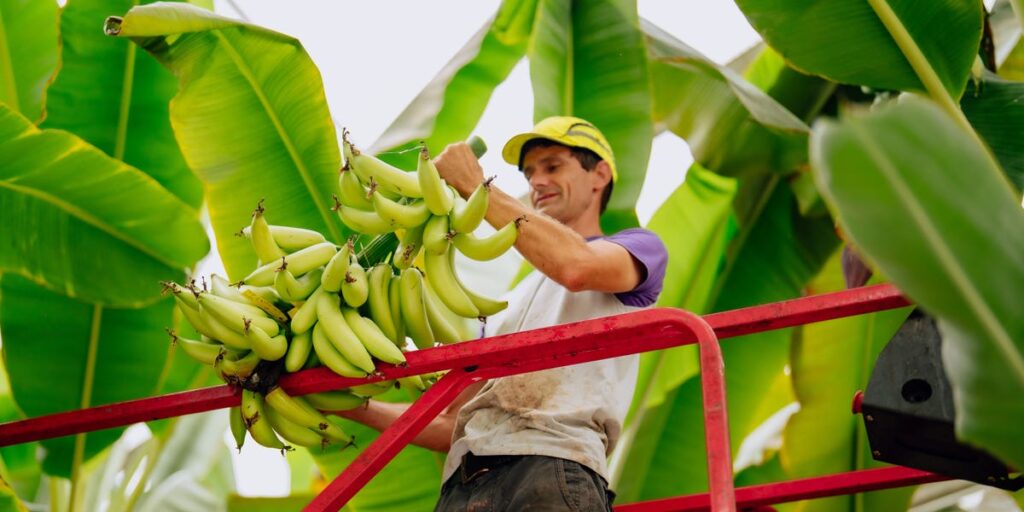- Researchers have developed a new disease-resistant banana called Yelloway One.
- Yelloway researchers use conventional breeding techniques, not genetic modification.
- The Yelloway Initiative is trying to improve the banana market, which is suffering.
The Netherlands may seem like an unlikely place to grow bananas, but it’s where researchers have recently created a brand new variety called Yelloway One.
The Yelloway One resembles bananas you might see in a grocery store, but it’s anything but. It’s the world’s first edible banana resistant to two diseases that are decimating the fruit worldwide, and it could change how we grow and buy bananas in the future.
In 2020, the global fruit company Chiquita partnered with several other organizations — KeyGene, MusaRadix, and Wageningen University & Research — to launch the Yelloway Initiative, which aims to solve a problem plaguing the banana industry.
The Cavendish, the most widely exported banana and probably the variety in your kitchen, is in trouble. Deadly fungal diseases are attacking the plants, threatening the fruit with extinction.
Researchers hope the Yelloway One is the first step to finding a tasty banana that can fight off these fungi.
“We’re not expecting it to be the production replacement for Cavendish,” Peter Stedman, director of sustainability at Chiquita, told Business Insider. “But it is proof that we can get there, and it’s proof that we are nearly there.”
Finding the building blocks of a better banana
The Yelloway project used conventional breeding techniques — not genetic modification — to make its new banana.
The tricky part with that process is that researchers can’t simply cross the Cavendish with more resilient varieties because the Cavendish is seedless and therefore sterile.
Instead, the researchers are looking for the traits in other banana varieties that match a Cavendish’s taste and hardiness.
To that end, Yelloway is studying the DNA of 150 banana varieties, to make a kind of banana family tree, Fernando García-Bastidas, the head of the banana breeding program at KeyGene, told BI.
They used information about the bananas’ disease resistance, color, yield, and other characteristics as a kind of Lego system, García-Bastidas said.
“We are able to identify the blocks that are required to recreate or improve a particular banana type,” he said.
They’re also using genetic analysis to hunt for Cavendish relatives that they can cross with Yelloway One.
The Yelloway One is on track to flower and produce bananas, but it’s not yet ready to arrive in grocery stores.
The next step is to test how it fares in enemy territory. Researchers will grow Yelloway One in the Philippines and Indonesia, where TR4 — a fungal disease — has decimated banana plants.
Ensuring history doesn’t repeat itself a third time
The Cavendish only became the world’s most widely eaten banana in the second half of the 20th century. Before that, the Gros Michel variety reigned supreme.
But in the 1950s, a fungus called TR1 wiped out the Gros Michel. The Cavendish, which is resistant to the disease, became growers’ new go-to fruit.
Now that TR4 is spreading, growers and scientists don’t want to make the same mistake again of relying on a single banana variety.
That’s why Yelloway is involved in creating other banana varieties, too.
“It’s not looking to just improve upon the Cavendish,” Stedman said. “It’s trying to create strength and biodiversity.”
Li-Jun Ma, a professor of biochemistry at the University of Massachusetts Amherst studying the banana-killing fungi, agrees we shouldn’t rely on a single banana variety.
“We should find ways to enhance the diversity in our market,” she told Business Insider.
Ultimately, Yelloway researchers envision a future where grocery stores offer multiple banana varieties. There will still be a place for the Cavendish on grocery shelves, but they won’t be your only option.
Read the full article here
















